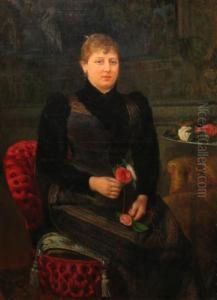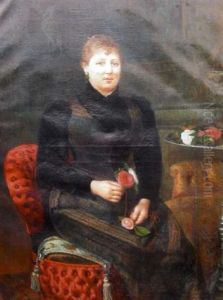Achille Talarico Paintings
Achille Talarico was an Italian painter, born in 1812 in Naples, Italy, into a period marked by significant political and social changes in Europe. His life and career were deeply influenced by the turbulent era of the 19th century, encompassing the rise of nationalism and the unification of Italy. Talarico's work is often associated with the Romantic movement, which was characterized by an emphasis on emotion and individualism, a glorification of the past and nature, and a fascination with the exotic and historical.
From a young age, Talarico showed an aptitude for the arts, leading him to study at the prestigious Academy of Fine Arts in Naples, where he was influenced by prominent figures of the Neapolitan painting tradition. His education and talent equipped him with the skills to explore various genres, including landscape, historical scenes, and religious subjects, which were popular among the Romantic artists of his time. Talarico's paintings are noted for their vivid detail, use of color, and the ability to convey intense emotion and drama.
Throughout his career, Talarico was active in the artistic circles of Naples and participated in various exhibitions, gaining recognition and accolades for his work. His paintings not only reflect the Romantic fascination with nature and history but also incorporate elements of the emerging Realist movement, which sought to depict subjects with truth and accuracy. This blend of styles allowed him to create works that were both idealized and grounded in the observable world.
Achille Talarico's contribution to the Italian art scene of the 19th century was significant, though he may not be as widely recognized as some of his contemporaries. His works are preserved in several Italian museums and collections, serving as a testament to his skill and artistic vision. Talarico died in 1887, leaving behind a legacy that encapsulates the spirit and complexity of 19th-century Italian art. His life and oeuvre offer valuable insights into the cultural and historical context of his time, making him a noteworthy figure in the study of Romantic and Realist art in Italy.


